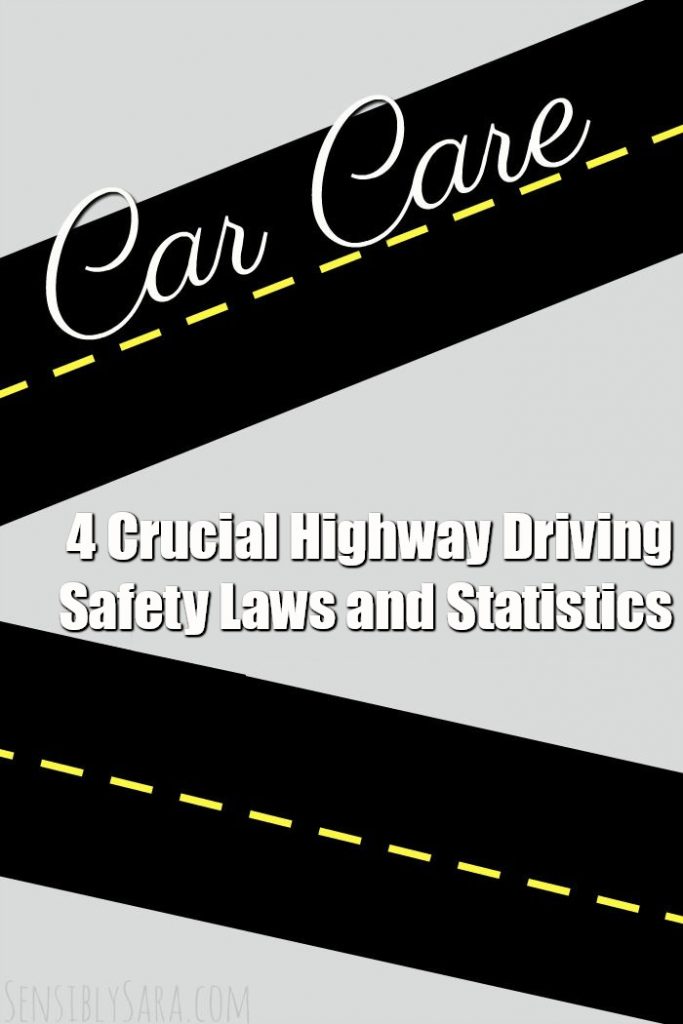According to the Hedges Company, in 2018, there were 276.1 million registered vehicles in the United States and 225.7 million licensed drivers. That’s a whole lot of cars out on American roads. With numbers like those, there are a few crucial highway driving safety laws and statistics you should know. According to the Bureau of Transportation Statistics (BTS), in 2017, there were 6,452,285 motor vehicle crashes, resulting in 37,133 fatalities and 2,746,000 injured people.
NOTE: All statistics listed below are U.S. statistics.

*Full Disclosure: This is a sponsored post. All opinions are my own.
Put Down the Cell Phone – While it’s tempting to grab your cell phone and answer a call or a text message while you’re driving, it is not only unsafe but it’s also against the law in most states. Reading or sending a text takes your eyes off the road for 5 seconds. While that may not seem like a lot, it equates to driving 360 feet, the length of a football field, with your eyes closed. According to the National Highway Traffic Safety Administration (NHTSA), in 2017, there were 2,935 fatal crashes that involved distracted drivers. Of those fatal crashes, 401 of them involved cell phone use as a distraction. According to the National Conference of State Legislatures (NCSL), 20 states and D.C. ban the use of hand-held cell phones for all drivers, while 48 states and D.C. ban texting while driving.
Obey the Posted Speed Limits – Being aware of and adhering to the posted speed limits on the highway is not only beneficial to your safety but the safety of others on the road as well. According to the NHTSA, in 2017, there were 9,717 traffic fatalities caused by a speeding driver. According to the Insurance Institute for Highway Safety (IIHS), each state has its own maximum posted speed limit on the highway. One state, Hawaii, has a maximum speed limit of 60 MPH. Additionally, 11 states have a maximum speed limit of 65 MPH, 21 states have a maximum of 70 MPH, 14 states have a maximum of 75 MPH and 3 states, Montana, Nevada and South Dakota, have a maximum of 80 MPH.
Don’t Drive Under the Influence – According to the Collins Dictionary, Driving Under the Influence (DUI) is defined as “the offense of driving after drinking more than the amount of alcohol that is legally allowed.” Driving under the influence can decrease coordination, distort vision, inhibit judgement, reduce concentration and slow down reaction time. According to the Governors Highway Safety Association (GHSA), in all states except Utah, it is illegal to drive with a Blood Alcohol Concentration (BAC) at or above 0.08%. In December 2018, Utah became the first U.S. state to lower its BAC limit to 0.05%. According to the NHTSA, in 2017, there were 10,874 people killed in drunk driving crashes.
Avoid Driving While Drowsy – On long highway drives, regularly stopping to take a break is crucial. Drowsy driving, driving while sleepy or fatigued, affects your ability to make good driving decisions, slows down your response time and makes you less able to pay attention to the task of driving. According to the American Automobile Association (AAA), drivers who slept 5-6 hours, in a 24-hour period, were 1.9 times more likely to be involved in a crash, when compared to drivers who slept the recommended 7+ hours. According to the NHTSA, in 2017, there were 91,000 motor vehicle crashes involving drowsy driving, claiming the lives of 795 people.
Head over to Winner Auto to find a car that fits your needs!
Leave a Reply